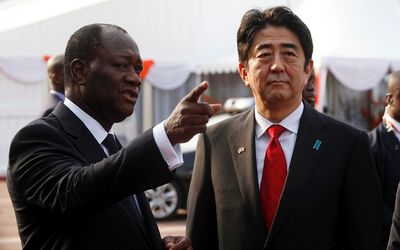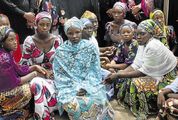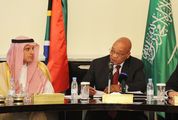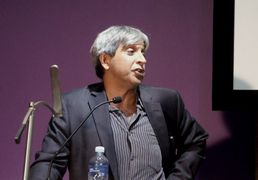JAPANESE Prime Minister Shinzo Abe passed through Africa last month on a multi-country tour, an opportunity for Japan to propose its economic development package to the continent. Given the $200bn a year trade between China and Africa, comparisons were natural, but made even livelier by the competitive words of the Japanese delegation.
The prime minister’s spokesman pitched the delegation as offering a people-to-people approach with technical skills transfer, as against Chinese engagement producing venal leaders living in "beautiful houses" built by Chinese aid.
Chinese Foreign Minister Wang Yi had days before remarked during his own African tour that Japan had a self-serving interest in lobbying Africa for a UN Security Council permanent seat.
Coming during a low point in Sino-Japanese relations, these two state tours acrimoniously coincided and obscured how complementary China and Japan are in uniting economic development in Africa.
In aim and execution, Chinese and Japanese operating plans are similar. A main feature of Japanese aid is providing concessionary loans to build infrastructure such as bridges, a frequently chosen type of project. As emphasised by the Japanese delegation, people-to-people assistance in training programmes for doctors and teachers also exists.
This is similar to Chinese aid and government-sponsored investment. China too builds public infrastructure such as bridges, stadiums, opera houses, government office buildings, and also beautiful presidential residences, as gifts or funded by low-cost loans mainly from the Export-Import Bank of China or the China Development Bank.
Rounding this out are scholarships and training with an estimated 12,000 African students in China on government scholarships, a much greater number than offered by traditional donors.
The goals of Chinese and Japanese programmes run parallel in commercial and political motivations too. China wants to win support for political causes, just like Japan. Most importantly, there is a link in both strategies to building goodwill for mineral and energy investments.
With similar content and motives in aid programmes, a critical remark about the flawed quality of the other’s plan is like self-disparagement.
But the more remarkable incongruity is how well two fractious parties are complementing each other at the project level.
This owes to the focus of China and Japan on physical infrastructure that fits well into the development plans of African governments.
In the last decade, there has been a road building spree across the continent supported by a tidal wave of Chinese construction contractors and financing by Chinese banks and Japanese foreign aid, among other sources. Piece by piece, the tarring of new roads and rehabilitation of ones in disrepair in Sudan, Ethiopia, Kenya, and Tanzania will finish a project envisioned 125 years ago.
The opening of two under-construction road projects in far north Kenya and central Tanzania will create a continuous paved road running from Cape Town to Cairo. It will be an achievement of historical resonance as Cecil Rhodes had advocated a road, and even more improbably then, a railway to integrate British Africa.
Since then the project has been a long work in progress.
An issue of Popular Mechanics dated 100 years ago reported "today the Cape-to-Cairo road is nearly half built, and its completion is merely a matter of time." But when British colonialism expired, the road was still unfinished and gaps remained that would not be paved until the recent era of implementation by African governments.
After so much new construction the unification of this African highway awaits the delivery of just those two remaining projects. Starting southward from the Ethiopian border, construction continues of the far north gap in Kenya, a project funded by the African Development Bank and the Export-Import Bank of China and undertaken by Fujian-based contractor China Wu Yi.
The other gap in Tanzania, running from Dodoma, the centrally placed capital, to the southern city of Iringa, is funded by the African Development Bank and JICA, the Japanese aid agency. In an added layer of co-operation, the road contractors of this Japanese project are Chinese construction firms.
It is an interesting twist to see the last pieces of this pan-African dream put into place by Chinese contractors, financed in part by China and, in unintended synergy, elsewhere in part by Japan, without any benefit of genial co-ordination.
As uneasy as geopolitical rivalry is, the result in this case is nothing like a Cold War proxy conflict. Instead, it has produced healthy competition and the result is a more robust marketplace.
China’s engagement in Africa has spurred other countries besides Japan, such as the US and European ones to renew attention to Africa. That sense of needing to catch up with China by other nations has been accompanied by more funding for African development.
These individual programmes are launched by donors in diplomatic self-interest; however, the thrust of many efforts is a convergence of new economic links, and Africa, without favouring allegiance to any source, can make use of every opportunity to fit the purpose.
Showing that spirit, for African overlanders it will be time to visit the Land Cruiser dealership after Chinese contractors hand over projects.
• Kai Xue is an attorney in Beijing in the cross-border transactions practice of a domestic law firm. He advises Chinese clients on projects in Africa and elsewhere.

Côte d'Ivoire President Alassane Ouattara, left, talks with Japanese Prime Minister Shinzo Abe at the presidential palace in Abidjan last month. Picture: REUTERS
JAPANESE Prime Minister Shinzo Abe passed through Africa last month on a multi-country tour, an opportunity for Japan to propose its economic development package to the continent. Given the $200bn a year trade between China and Africa, comparisons were natural, but made even livelier by the competitive words of the Japanese delegation.
The prime minister’s spokesman pitched the delegation as offering a people-to-people approach with technical skills transfer, as against Chinese engagement producing venal leaders living in "beautiful houses" built by Chinese aid.
Chinese Foreign Minister Wang Yi had days before remarked during his own African tour that Japan had a self-serving interest in lobbying Africa for a UN Security Council permanent seat.
Coming during a low point in Sino-Japanese relations, these two state tours acrimoniously coincided and obscured how complementary China and Japan are in uniting economic development in Africa.
In aim and execution, Chinese and Japanese operating plans are similar. A main feature of Japanese aid is providing concessionary loans to build infrastructure such as bridges, a frequently chosen type of project. As emphasised by the Japanese delegation, people-to-people assistance in training programmes for doctors and teachers also exists.
This is similar to Chinese aid and government-sponsored investment. China too builds public infrastructure such as bridges, stadiums, opera houses, government office buildings, and also beautiful presidential residences, as gifts or funded by low-cost loans mainly from the Export-Import Bank of China or the China Development Bank.
Rounding this out are scholarships and training with an estimated 12,000 African students in China on government scholarships, a much greater number than offered by traditional donors.
The goals of Chinese and Japanese programmes run parallel in commercial and political motivations too. China wants to win support for political causes, just like Japan. Most importantly, there is a link in both strategies to building goodwill for mineral and energy investments.
With similar content and motives in aid programmes, a critical remark about the flawed quality of the other’s plan is like self-disparagement.
But the more remarkable incongruity is how well two fractious parties are complementing each other at the project level.
This owes to the focus of China and Japan on physical infrastructure that fits well into the development plans of African governments.
In the last decade, there has been a road building spree across the continent supported by a tidal wave of Chinese construction contractors and financing by Chinese banks and Japanese foreign aid, among other sources. Piece by piece, the tarring of new roads and rehabilitation of ones in disrepair in Sudan, Ethiopia, Kenya, and Tanzania will finish a project envisioned 125 years ago.
The opening of two under-construction road projects in far north Kenya and central Tanzania will create a continuous paved road running from Cape Town to Cairo. It will be an achievement of historical resonance as Cecil Rhodes had advocated a road, and even more improbably then, a railway to integrate British Africa.
Since then the project has been a long work in progress.
An issue of Popular Mechanics dated 100 years ago reported "today the Cape-to-Cairo road is nearly half built, and its completion is merely a matter of time." But when British colonialism expired, the road was still unfinished and gaps remained that would not be paved until the recent era of implementation by African governments.
After so much new construction the unification of this African highway awaits the delivery of just those two remaining projects. Starting southward from the Ethiopian border, construction continues of the far north gap in Kenya, a project funded by the African Development Bank and the Export-Import Bank of China and undertaken by Fujian-based contractor China Wu Yi.
The other gap in Tanzania, running from Dodoma, the centrally placed capital, to the southern city of Iringa, is funded by the African Development Bank and JICA, the Japanese aid agency. In an added layer of co-operation, the road contractors of this Japanese project are Chinese construction firms.
It is an interesting twist to see the last pieces of this pan-African dream put into place by Chinese contractors, financed in part by China and, in unintended synergy, elsewhere in part by Japan, without any benefit of genial co-ordination.
As uneasy as geopolitical rivalry is, the result in this case is nothing like a Cold War proxy conflict. Instead, it has produced healthy competition and the result is a more robust marketplace.
China’s engagement in Africa has spurred other countries besides Japan, such as the US and European ones to renew attention to Africa. That sense of needing to catch up with China by other nations has been accompanied by more funding for African development.
These individual programmes are launched by donors in diplomatic self-interest; however, the thrust of many efforts is a convergence of new economic links, and Africa, without favouring allegiance to any source, can make use of every opportunity to fit the purpose.
Showing that spirit, for African overlanders it will be time to visit the Land Cruiser dealership after Chinese contractors hand over projects.
• Kai Xue is an attorney in Beijing in the cross-border transactions practice of a domestic law firm. He advises Chinese clients on projects in Africa and elsewhere.






















Change: -0.47%
Change: -0.57%
Change: -1.76%
Change: -0.34%
Change: 0.02%
Data supplied by Profile Data
Change: -1.49%
Change: -0.04%
Change: -0.47%
Change: 0.00%
Change: 0.08%
Data supplied by Profile Data
Change: 0.36%
Change: 0.61%
Change: 0.12%
Change: -0.29%
Change: 0.82%
Data supplied by Profile Data
Change: 0.28%
Change: -0.42%
Change: 0.20%
Change: -1.57%
Change: -0.96%
Data supplied by Profile Data